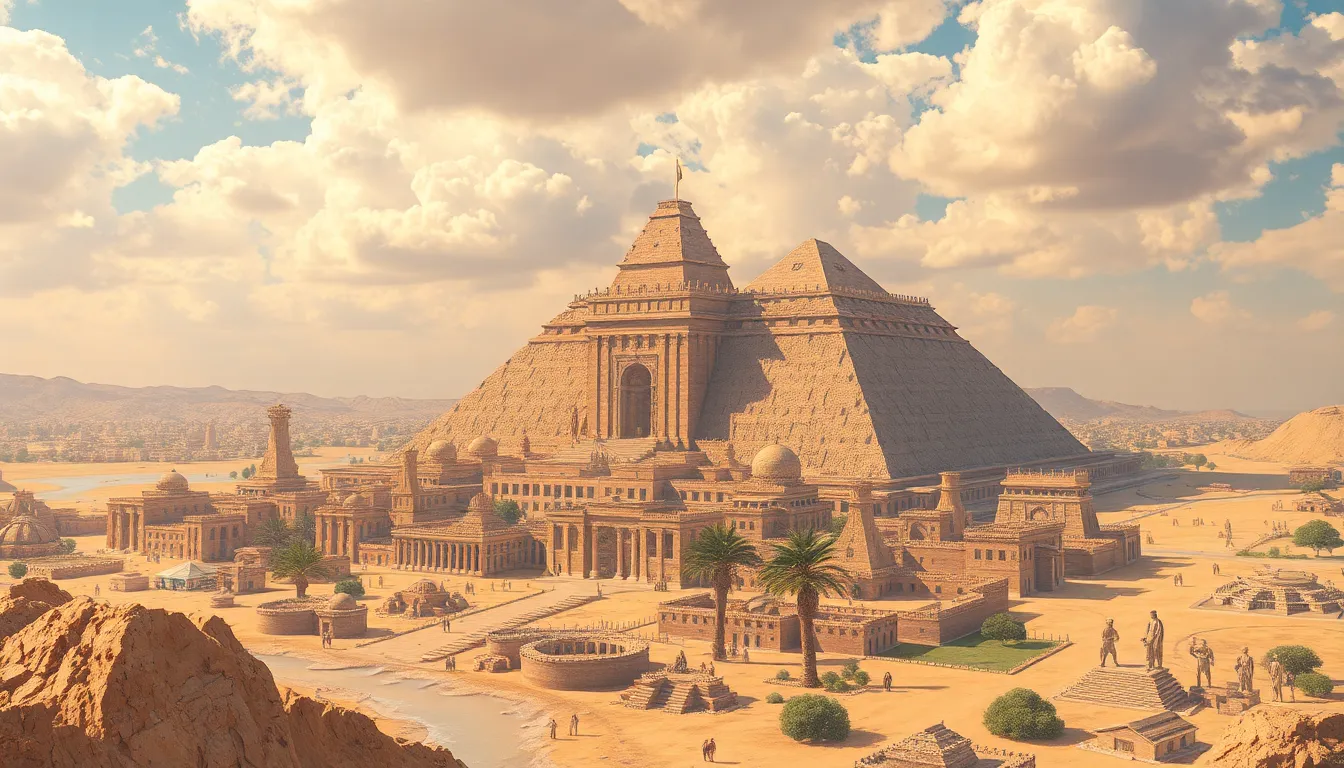The Mythical Geography of the City of Heliopolis
I. Introduction to Heliopolis
Heliopolis, known as Iunu in ancient Egyptian, was one of the most significant religious centers in ancient Egypt. Located near modern-day Cairo, this city played a pivotal role in the mythology and religion of the ancient Egyptians. Its importance stemmed from its association with the sun god Ra and the creation myths that originated there. Exploring the mythical geography of Heliopolis allows us to gain a deeper understanding of how the ancient Egyptians viewed their world and the divine.
II. Historical Context of Heliopolis
Heliopolis has a rich history that dates back to the early dynastic period. Its establishment can be traced to the Old Kingdom, where it emerged as a center for worship and scholarship.
- Origins and establishment of Heliopolis: Heliopolis was founded as a religious center dedicated to the sun god Ra. The site was revered for its sacredness and was central to the worship of the solar deity.
- Role of Heliopolis in ancient Egyptian civilization: Heliopolis served not only as a religious hub but also as a seat of learning. It was here that priests studied astronomy, mathematics, and theology, contributing to the advancement of ancient Egyptian civilization.
- Key archaeological discoveries and their implications: Excavations in Heliopolis have uncovered significant artifacts, temple ruins, and inscriptions that provide insight into the city’s religious practices and social structure.
III. The Sacred Landscape of Heliopolis
The geographic location of Heliopolis was not just a matter of chance; it was intricately tied to its spiritual significance. Positioned on the eastern bank of the Nile, Heliopolis was aligned with the rising sun, emphasizing its connection to solar worship.
- Description of sacred sites and temples: The most notable structure in Heliopolis was the Temple of Ra, which housed a sacred obelisk known as the Benben stone. This obelisk symbolized the primordial mound from which life emerged.
- Symbolic elements of Heliopolis’ geography: The landscape surrounding Heliopolis was imbued with symbolism, representing the cosmos, creation, and the cycle of life and death.
IV. The Myth of Creation: Heliopolis in Egyptian Cosmology
Heliopolis is central to one of the most profound creation myths in Egyptian cosmology, involving the Ogdoad—eight primordial deities representing chaos and creation.
- The Ogdoad and the creation myth: The myth posits that from the primordial waters of chaos, the Ogdoad emerged, eventually leading to the creation of the world and the rise of Ra.
- Role of the sun god Ra and other deities: Ra, as the sun god, was believed to have created himself from the chaos and established order in the universe. Other deities, such as Atum and Nun, also played significant roles in this cosmological narrative.
- Mythical geography as a reflection of cosmological beliefs: The geography of Heliopolis mirrored the creation myth, with temples and sacred sites representing various aspects of the cosmos and the divine order established by Ra.
V. The Architecture and Urban Planning of Heliopolis
The architecture of Heliopolis was grand and purposeful, reflecting its religious significance and the beliefs of the ancient Egyptians.
- Description of monumental structures: Heliopolis featured impressive structures, including massive temples, obelisks, and altars dedicated to Ra and other deities. The Temple of Ra was one of the largest and most important.
- The layout of the city and its symbolic meanings: The city’s layout was meticulously planned, with temples oriented towards the east to catch the first light of dawn, symbolizing rebirth and renewal.
- The influence of architectural designs on mythological narratives: The architectural elements of Heliopolis contributed to its myths, as the structures served not only as places of worship but also as representations of the cosmic order.
VI. Heliopolis in Literature and Art
Heliopolis has been captured in various ancient texts and artworks, showcasing its significance in the cultural imagination of the ancient Egyptians.
- Representation of Heliopolis in ancient texts: Texts such as the Pyramid Texts and Coffin Texts reference Heliopolis, emphasizing its role in the afterlife and the worship of Ra.
- Artistic depictions of the city in various forms: Heliopolis has been represented in wall carvings, pottery, and papyrus scrolls, often showcasing its temples and the rituals conducted there.
- The impact of literature and art on the perception of Heliopolis: These artistic representations have shaped our understanding of Heliopolis as a center of spirituality and power in ancient Egypt.
VII. Modern Interpretations and Legacy of Heliopolis
In contemporary times, Heliopolis continues to captivate scholars and enthusiasts alike, influencing modern interpretations of ancient Egyptian culture.
- Heliopolis in contemporary scholarship and culture: Scholars study Heliopolis to better understand its religious practices, cosmology, and its role in the broader context of ancient Egyptian history.
- The influence of Heliopolis on modern imagination: The myths and architectural grandeur of Heliopolis have inspired countless works of fiction, art, and film, solidifying its place in modern cultural narratives.
- Preservation efforts and ongoing research: Archaeological efforts continue to uncover Heliopolis’s secrets, with ongoing projects aimed at preserving its historical sites and promoting public awareness.
VIII. Conclusion
In summary, Heliopolis stands as a testament to the rich tapestry of ancient Egyptian mythology and civilization. Its mythical geography is deeply intertwined with the beliefs, practices, and architectural achievements of the time. The allure of Heliopolis endures, inviting exploration and reflection on its significance in understanding ancient civilizations.
The study of Heliopolis not only enriches our knowledge of ancient Egypt but also highlights the importance of mythical geography in shaping cultural narratives across time and space.




